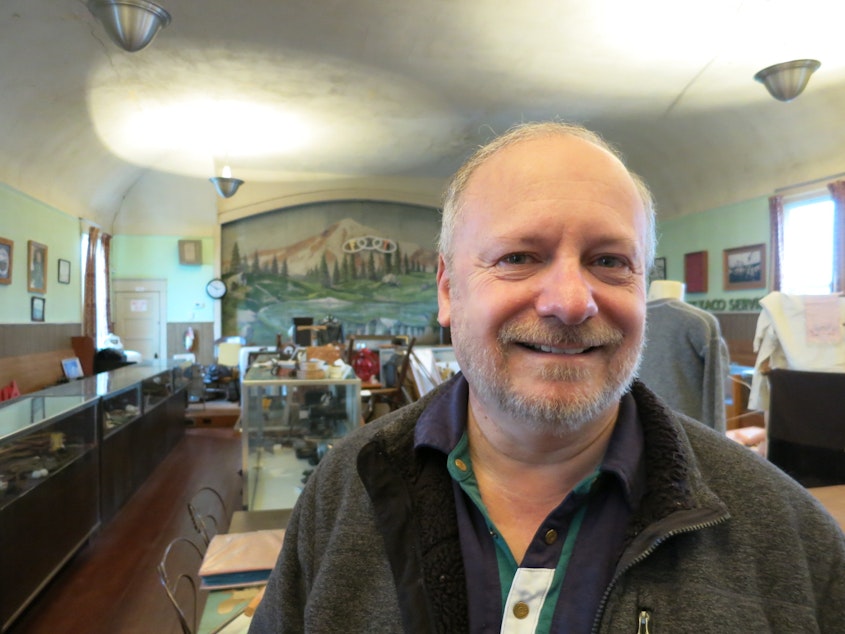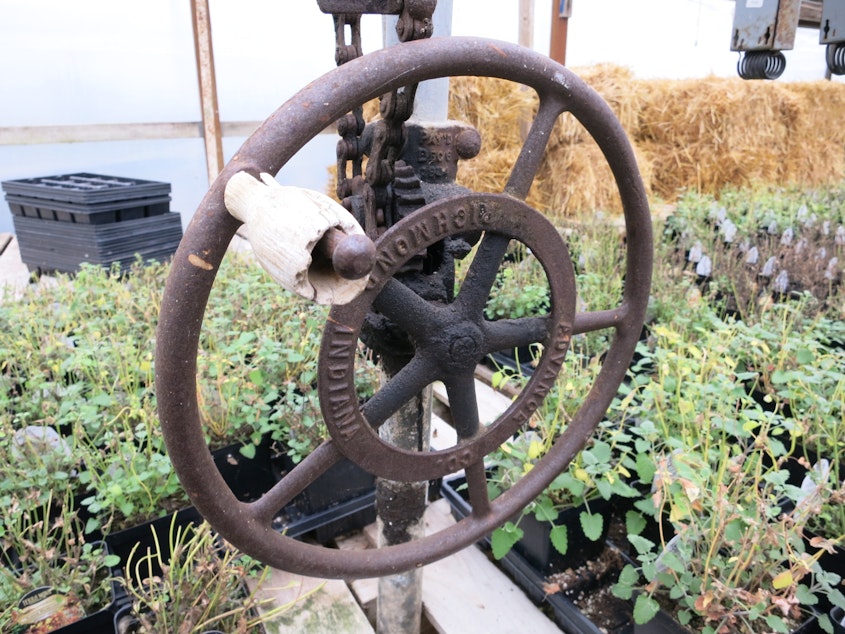A mysterious dot on an old map, and a Washington man’s quest to find it
This is the story of a missing town south of Seattle, and Nick Millward, a man who loves maps and sometimes has trouble sleeping at night.
When insomnia strikes, Millward holds a map and lets his “eyeballs dance around it.”
He's particularly fond of a 1957 world atlas that belonged to his mother. As a kid he marveled at the pastel-colored pages, impressed that his hometown of Pocatello, Idaho, was big enough to merit notation.
These days, reading the atlas returns him to another time. “It’s an easy way to zip from one memory to the next in a bird’s eye view,” Millward said.
One night, Millward spotted Zenith, Washington, a dot south of Des Moines. Zenith? Hmmm. He'd never heard of it. He cross-referenced it with his 2013 Rand McNally road map. Yup. There it was.
While other towns disappeared – Foster, Orillia, and Midway – Zenith remained.
Sponsored
Millward drove to find this dot – once with his wife on a Saturday morning, let’s-throw-a-dart-and-visit trip in the family minivan, and other times when he was in the neighborhood for contractor work.
But there was no Zenith. “There weren't any signs, or markers, or old storefronts, or anything,” Millward said. “There's no trace of it.”
The mystery gnawed at him.
Millward is a puzzle and crosswords guy. When a crossword clue bedevils him, he turns to Wikipedia. But the Internet didn't help when it came to Zenith.
Sponsored
So Millward wrote to KUOW in 2014, and again, in 2018 to ask about this dot. Our SoundQs team took on the mystery.
We started with the Des Moines Historical Society, and invited Millward to join. “Never in my wildest dreams did I think that we'd all be here today exploring this mysterious town of Zenith!” Millward said.
We learned there that this dot called Zenith, before it was a dot called Zenith, was fishing and shellfish harvesting ground for Duwamish and Muckleshoot people.
Richard Kennedy, editor of One Hundred Years of the "Waterland" Community, a history book on Des Moines, told us that white people moved here around 1875. Few details about these people have been recorded, although we know, for example, that the Widell family moved to Zenith from the Dakotas in 1904 and “raised wonderful strawberries.”
Of course, it wasn’t called Zenith until 1906. The residents of what had been called “South Des Moines” petitioned the government for their own post office and voted for the name Zenith, because they lived atop a hill.
Sponsored
(“Zenith seems like such an ambitious name for a town,” Millward said. “I suppose they had high hopes for it in the early 20th century.”)
Residents traveled by “mosquito fleet,” a network of steam-powered passenger ships that could take passengers to Zenith from Seattle in two hours, before a brick highway was laid from Des Moines in 1916.
After World War I, well-heeled businessmen and county officials built summer homes here, with swimming pools and magnificent views of Puget Sound and the Olympics.
“I remember growing up in this area being able to see the Milky Way at night,” said Kennedy, the historian. He grew up in Des Moines. “It's something you can't do nowadays, and it's become increasingly suburbanized.”
The 1960s brought development to Zenith: Boeing employees, rambler-style houses, and kids tricycling down newly paved sidewalks.
Sponsored
We talked to one woman who raised her family there, Carol Lee Davis. (Please note the "Lee," Carol Lee Davis said. “There are five Carol Davises in south Seattle area.”)
The young families became a community. They’d pile in a couple cars and spend the day exploring Gig Harbor; celebrate births and anniversaries, and organize pageants and parades.
Carol Lee Davis was a stay-at-home mom to three kids. Her husband, Eldon, worked at Boeing. To make a little extra money, she made crafts.
“We opened our homes," she said. "In those days people would walk in from the community and we would sell our crafts in the bedroom, the living room, the kitchen.”
The Davises also led a successful campaign to get postal delivery to their doors. Before, residents had to hoof it to the Zenith post office before it closed at 5 p.m. to access their personal locked post box, which cost $9 a year to rent.
Sponsored
Growth continued: King County grew 36 percent between 1960 and 1980, according to historic census data from the University of Minnesota.
In 1978, Kennedy moved to Zenith and said he found county services lacking.
“It was difficult to get a road repair, street lighting,” he said. “Police had to be dispatched from quite a different area, and the county was also in the process of rezoning our area.”
Rezoning can summon a neighborhood to arms like few other issues, as Seattleites know. “We wanted to keep the small neighborhood feeling of the Zenith area,” Kennedy said.

Kennedy helped lead the signature-gathering effort to fold Zenith into Des Moines. “We went out, spent many an evening and weekend going door to door explaining the advantages of annexation,” Kennedy said.
On November 22, 1982, Zenith joined Des Moines, its legacy relegated to a dot on a map ... and the Zenith Holland Gardens, a nursery that dates back to 1907. It's owned by Lyn Robinson.

We went to the nursery, Millward in tow. Holiday music played in the toasty greenhouse, where customers helped themselves to free cocoa and cider.
(Millward: “Your Hellebores look good. I’m a landscape irrigation contractor.”
Robinson: “Oh, you are? I need your card.”)
Robinson bought the nursery in 1980, when she was in her 20s, for $106,000. The owner, originally from Holland, had died. Robinson still wonders what possessed her to buy a place where she'd worked for just two years as a cashier.
“I guess I just saw an opportunity and thought I could have fun with it,” Robinson said. “I didn't think I would still be here after all these years.”

Robinson led us through the greenhouses to show us an old crank with a looped chain, once used to open the skylights and vent the greenhouse.
“I used to love coming out here, turning this crank and opening them up," Robinson said.
The crank is useless now. Unless you count the memories.
It's like Zenith, in a way, a reminder of days gone by, a vestige of another time, after the world around has moved on.




